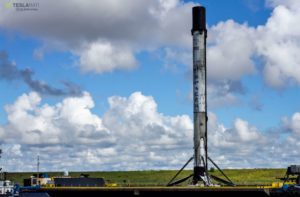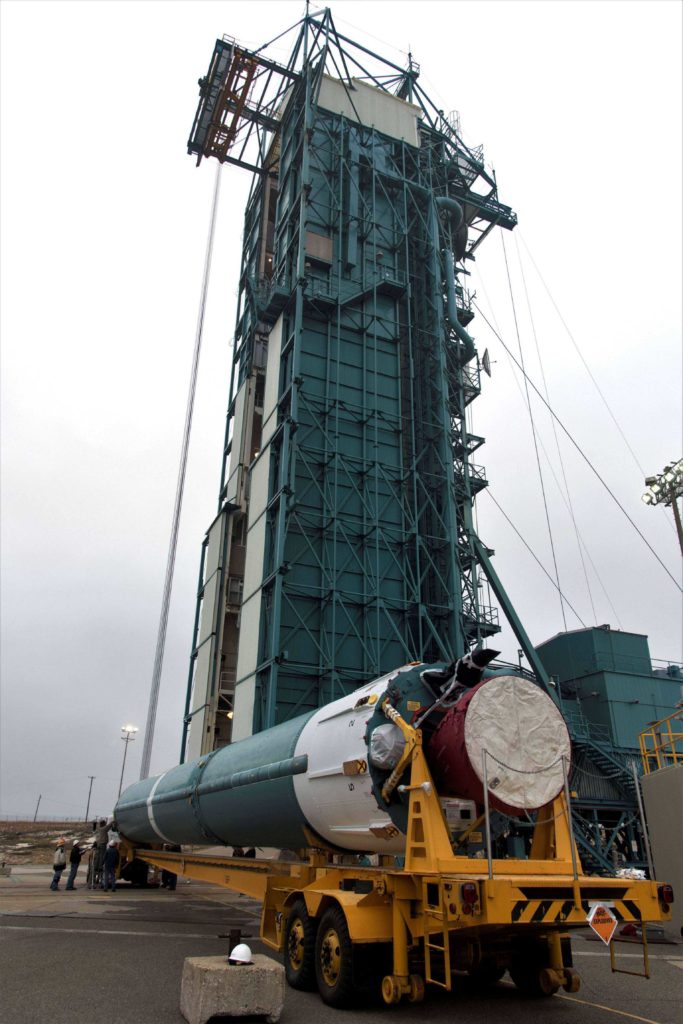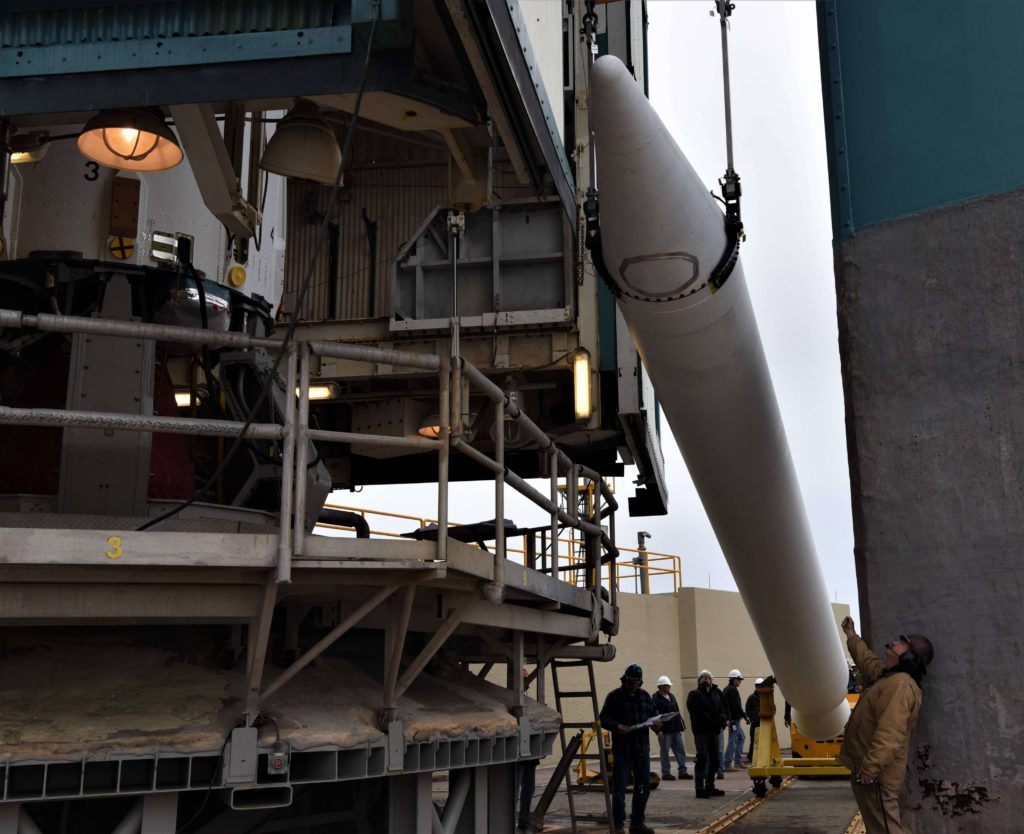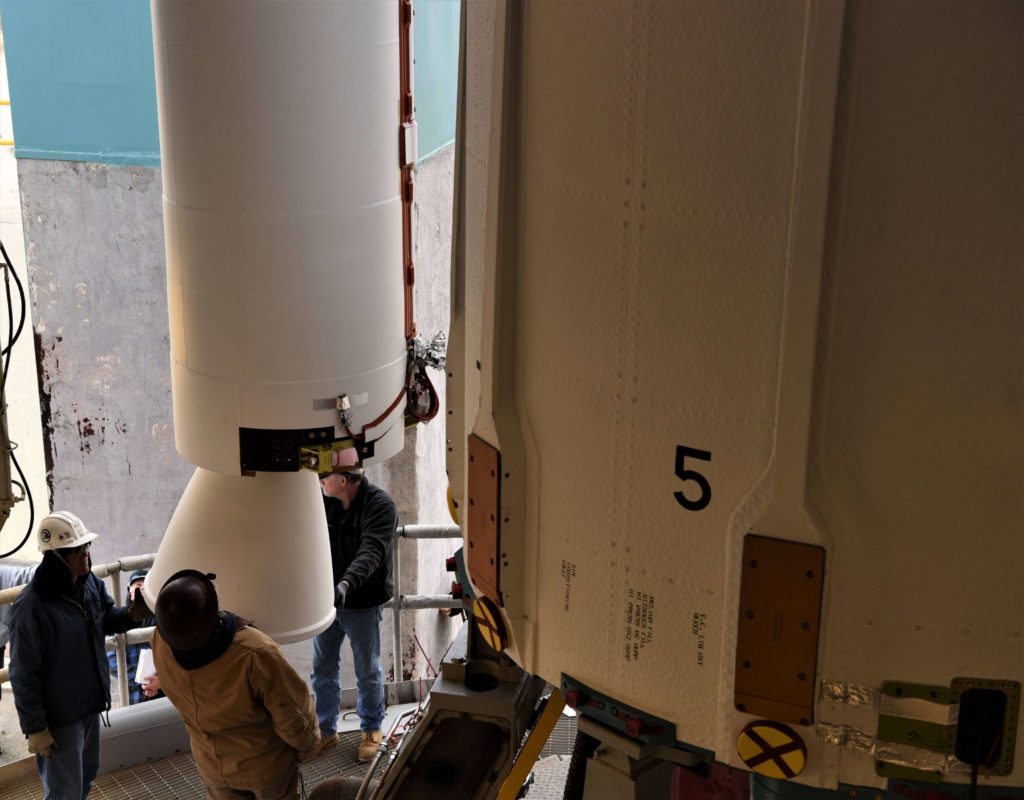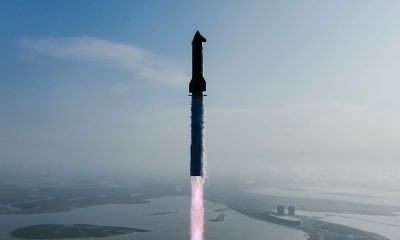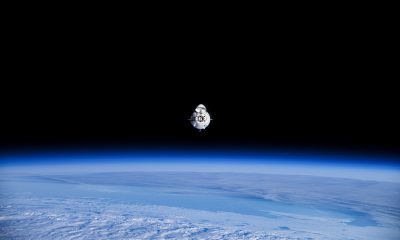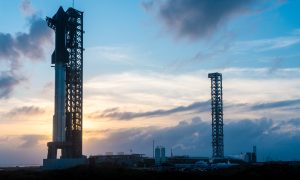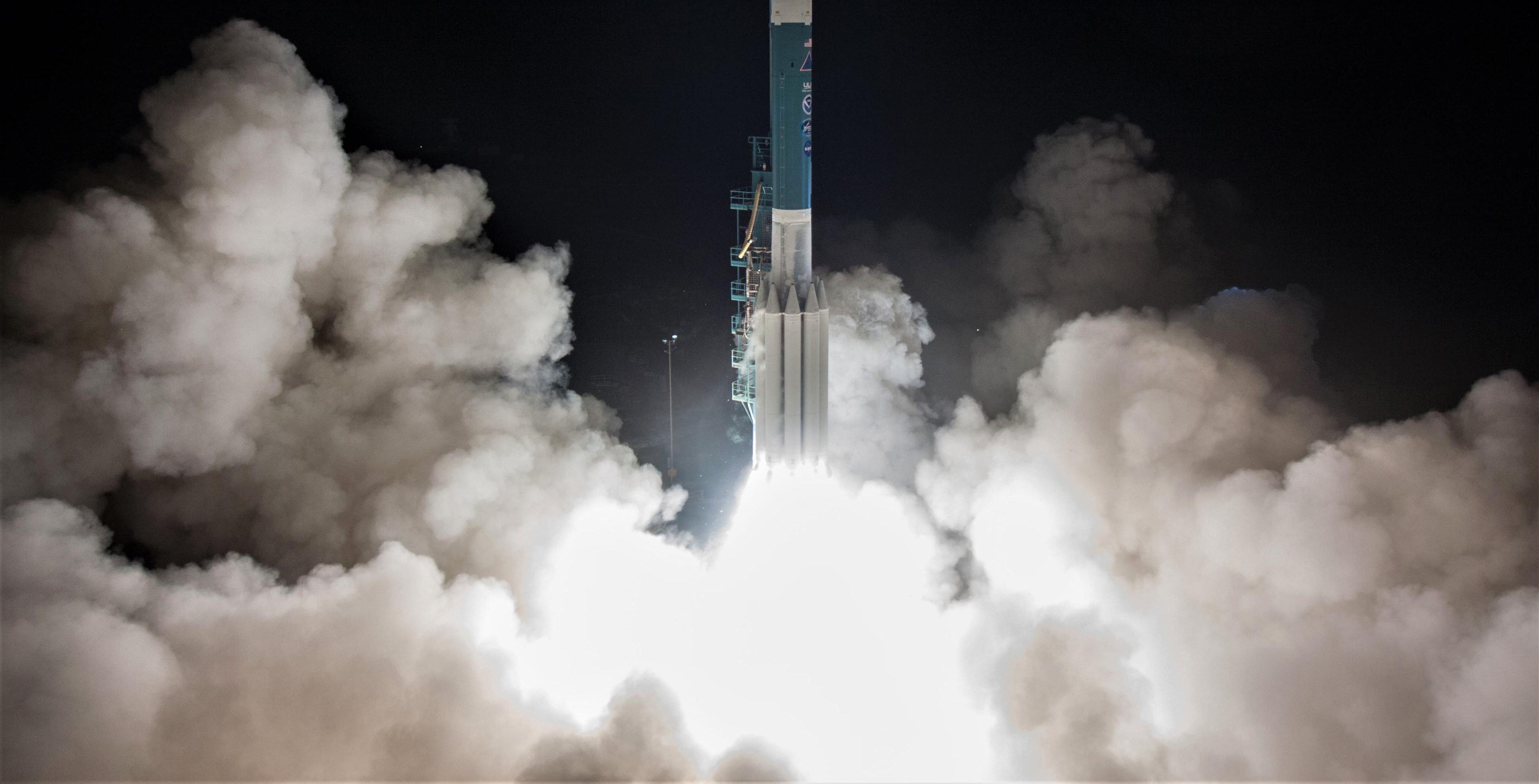

News
SpaceX competitor ULA readies for final launch of 30-year-old Delta II rocket
Long-time SpaceX competitor United Launch Alliance (ULA) is nearly ready for the final launch of its Boeing subsidiary’s Delta II family of rockets, culminating a nearly 30-year history mostly dominated by routine success.
If completed without failure, the launch of NASA’s ICESat-2 satellite – built to track global ice-sheet variation with a huge space-based laser – will mark Delta II’s 100th consecutive success and the rocket’s 153rd fully successful launch overall, an immensely impressive and laudable achievement regardless of the vehicle’s lack of competitive advantage in the modern launch industry.
A teary farewell to Delta II this weekend, so in the run up we're going to give her a send off with a trip down memory lane per the vehicle's evolution from Thor.
Standby for a 7,000 word (yep!) feature article from William Graham on Thursday, with a ton of cool info/old photos. pic.twitter.com/g43PS6kHcr
— NSF – NASASpaceflight.com (@NASASpaceflight) September 13, 2018
Shockingly tiny when compared with modern launch vehicles like Delta IV, Atlas V, and Falcon 9, Delta II measures roughly 39 meters (~128 ft) tall, 2.4 meters (8 ft) in diameter, and weighs 160 metric tons (~350,000 lb) when fully fueled, just over half as tall and significantly less than 30% as heavy as SpaceX’s Falcon 9.
Contracted by NASA in 2013, Delta II’s ICESat-2 launch cost the agency roughly $97 million (2013 USD), although the cost of launch has shrunk in relation to the satellite, which suffered at least $200 million of overruns and 12+ months of delays due to difficulties developing the spacecraft’s impressive space-based LIDAR system. For comparison, NASA contracted a Falcon 9 launch (for the TESS exoplanet observatory, launched in April 2018) from SpaceX for $87 million in 2016, while the USAF has secured several launch contracts with SpaceX for far more complex GPS satellite launches at a cost of almost exactly $97 million apiece.
- The final Delta II rocket is awaiting its last launch from Vandenberg Air Force Base this Saturday. (NASA/Randy Beaudoin)
- A Delta II Heavy rocket seen launching NASA’s THEMIS satellite in 2007. (NASA)
- Falcon 9 Block 5 booster B1049 returned to Port Canaveral today, ~60 hours after launch. Falcon 9 is dramatically cheaper than the aging Delta II. (Tom Cross)
Aging rockets, changing markets
Put simply, the contrast in capabilities offered for equivalent prices soundly demonstrates exactly why Delta II is being phased out. Although capable of better performance with a third upper stage and nine much larger solid rocket boosters (SRBs), that ‘Heavy’ variant of Delta II cost NASA an incredible $150 million per launch in 2009. For the versions of Delta II closer to $100 million per launch, the rocket is able to place 2500-3200 kg (5500-7000 lb) in low Earth orbit and not much at all to any higher energy destinations, which demand a third stage or a heavier rocket. At a comparable price (or much lower in SpaceX’s case), Atlas V and Falcon 9 are able to launch far larger payloads to far higher orbits.
This was by no means the case when Delta II debuted in 1989, and the McDonnell Douglas-built rocket readily earned its impressive reputation as a relatively reliable, capable, and (more or less) affordable launch vehicle compared alongside other rockets available in the ’90s. Delta II wound up as a ULA rocket (sort of) thanks to Boeing and McDonnell Douglas’ 1997 corporate merger, followed in 2006 by Lockheed Martin and Boeing’s cooperative formation of the United Launch Alliance. ULA thus operates Delta II, Delta IV, and Atlas V, all featuring multiple variants and very few distinguishing capabilities when compared amongst themselves.
- Delta II is trucked to the launch pad ahead prior to launch. (NASA)
- The business end of Delta II. (ULA)
- ULA technicians install one of four solid rocket boosters on ICESat-2’s Delta II launch vehicle. (NASA)
- ULA technicians install one of four solid rocket boosters on ICESat-2’s Delta II launch vehicle. (NASA)
The cost of maintaining all those highly duplicative rockets and unique factories and engineering expertise is fundamentally unnatural and reliant upon some sort of noncompetitive market forces (i.e. launch monopolies assured through “block buys” of multiple rockets from NASA and the US military), forces that have been mortally challenged by SpaceX’s reintroduction of competition to the American launch industry.
ICESat-2 is scheduled to launch on Delta II on Saturday, September 15th at 5:46 AM PDT/12:46 UTC. Stay tuned for more information on ICESat-2’s giant space LIDAR payload and mission goals, as well as Teslarati photographer Pauline Acalin’s photos of the fairly historic rocket launch.
For prompt updates, on-the-ground perspectives, and unique glimpses of SpaceX’s rocket recovery fleet check out our brand new LaunchPad and LandingZone newsletters!
News
Tesla cleared in Canada EV rebate investigation
Tesla has been cleared in an investigation into the company’s staggering number of EV rebate claims in Canada in January.

Canadian officials have cleared Tesla following an investigation into a large number of claims submitted to the country’s electric vehicle (EV) rebates earlier this year.
Transport Canada has ruled that there was no evidence of fraud after Tesla submitted 8,653 EV rebate claims for the country’s Incentives for Zero-Emission Vehicles (iZEV) program, as detailed in a report on Friday from The Globe and Mail. Despite the huge number of claims, Canadian authorities have found that the figure represented vehicles that had been delivered prior to the submission deadline for the program.
According to Transport Minister Chrystia Freeland, the claims “were determined to legitimately represent cars sold before January 12,” which was the final day for OEMs to submit these claims before the government suspended the program.
Upon initial reporting of the Tesla claims submitted in January, it was estimated that they were valued at around $43 million. In March, Freeland and Transport Canada opened the investigation into Tesla, noting that they would be freezing the rebate payments until the claims were found to be valid.
READ MORE ON ELECTRIC VEHICLES: EVs getting cleaner more quickly than expected in Europe: study
Huw Williams, Canadian Automobile Dealers Association Public Affairs Director, accepted the results of the investigation, while also questioning how Tesla knew to submit the claims that weekend, just before the program ran out.
“I think there’s a larger question as to how Tesla knew to run those through on that weekend,” Williams said. “It doesn’t appear to me that we have an investigation into any communication between Transport Canada and Tesla, between officials who may have shared information inappropriately.”
Tesla sales have been down in Canada for the first half of this year, amidst turmoil between the country and the Trump administration’s tariffs. Although Elon Musk has since stepped back from his role with the administration, a number of companies and officials in Canada were calling for a boycott of Tesla’s vehicles earlier this year, due in part to his association with Trump.
News
Tesla Semis to get 18 new Megachargers at this PepsiCo plant
PepsiCo is set to add more Tesla Semi Megachargers, this time at a facility in North Carolina.

Tesla partner PepsiCo is set to build new Semi charging stations at one of its manufacturing sites, as revealed in new permitting plans shared this week.
On Friday, Tesla charging station scout MarcoRP shared plans on X for 18 Semi Megacharging stalls at PepsiCo’s facility in Charlotte, North Carolina, coming as the latest update plans for the company’s increasingly electrified fleet. The stalls are set to be built side by side, along with three Tesla Megapack grid-scale battery systems.
The plans also note the faster charging speeds for the chargers, which can charge the Class 8 Semi at speeds of up to 1MW. Tesla says that the speed can charge the Semi back to roughly 70 percent in around 30 minutes.
You can see the site plans for the PepsiCo North Carolina Megacharger below.

Credit: PepsiCo (via MarcoRPi1 on X)

Credit: PepsiCo (via MarcoRPi1 on X)
READ MORE ON THE TESLA SEMI: Tesla to build Semi Megacharger station in Southern California
PepsiCo’s Tesla Semi fleet, other Megachargers, and initial tests and deliveries
PepsiCo was the first external customer to take delivery of Tesla’s Semis back in 2023, starting with just an initial order of 15. Since then, the company has continued to expand the fleet, recently taking delivery of an additional 50 units in California. The PepsiCo fleet was up to around 86 units as of last year, according to statements from Semi Senior Manager Dan Priestley.
Additionally, the company has similar Megachargers at its facilities in Modesto, Sacramento, and Fresno, California, and Tesla also submitted plans for approval to build 12 new Megacharging stalls in Los Angeles County.
Over the past couple of years, Tesla has also been delivering the electric Class 8 units to a number of other companies for pilot programs, and Priestley shared some results from PepsiCo’s initial Semi tests last year. Notably, the executive spoke with a handful of PepsiCo workers who said they really liked the Semi and wouldn’t plan on going back to diesel trucks.
The company is also nearing completion of a higher-volume Semi plant at its Gigafactory in Nevada, which is expected to eventually have an annual production capacity of 50,000 Semi units.
Tesla executive teases plan to further electrify supply chain
News
Tesla sales soar in Norway with new Model Y leading the charge
Tesla recorded a 54% year-over-year jump in new vehicle registrations in June.

Tesla is seeing strong momentum in Norway, with sales of the new Model Y helping the company maintain dominance in one of the world’s most electric vehicle-friendly markets.
Model Y upgrades and consumer preferences
According to the Norwegian Road Federation (OFV), Tesla recorded a 54% year-over-year jump in new vehicle registrations in June. The Model Y led the charge, posting a 115% increase compared to the same period last year. Tesla Norway’s growth was even more notable in May, with sales surging a whopping 213%, as noted in a CNBC report.
Christina Bu, secretary general of the Norwegian EV Association (NEVA), stated that Tesla’s strong market performance was partly due to the updated Model Y, which is really just a good car, period.
“I think it just has to do with the fact that they deliver a car which has quite a lot of value for money and is what Norwegians need. What Norwegians need, a large luggage space, all wheel drive, and a tow hitch, high ground clearance as well. In addition, quite good digital solutions which people have gotten used to, and also a charging network,” she said.
Tesla in Europe
Tesla’s success in Norway is supported by long-standing government incentives for EV adoption, including exemptions from VAT, road toll discounts, and access to bus lanes. Public and home charging infrastructure is also widely available, making the EV ownership experience in the country very convenient.
Tesla’s performance in Europe is still a mixed bag, with markets like Germany and France still seeing declines in recent months. In areas such as Norway, Spain, and Portugal, however, Tesla’s new car registrations are rising. Spain’s sales rose 61% and Portugal’s sales rose 7% last month. This suggests that regional demand may be stabilizing or rebounding in pockets of Europe.
-

 Elon Musk2 weeks ago
Elon Musk2 weeks agoTesla investors will be shocked by Jim Cramer’s latest assessment
-

 Elon Musk2 days ago
Elon Musk2 days agoxAI launches Grok 4 with new $300/month SuperGrok Heavy subscription
-

 Elon Musk4 days ago
Elon Musk4 days agoElon Musk confirms Grok 4 launch on July 9 with livestream event
-

 News1 week ago
News1 week agoTesla Model 3 ranks as the safest new car in Europe for 2025, per Euro NCAP tests
-

 Elon Musk2 weeks ago
Elon Musk2 weeks agoA Tesla just delivered itself to a customer autonomously, Elon Musk confirms
-

 Elon Musk1 week ago
Elon Musk1 week agoxAI’s Memphis data center receives air permit despite community criticism
-

 News2 weeks ago
News2 weeks agoXiaomi CEO congratulates Tesla on first FSD delivery: “We have to continue learning!”
-

 Investor's Corner2 weeks ago
Investor's Corner2 weeks agoTesla gets $475 price target from Benchmark amid initial Robotaxi rollout



